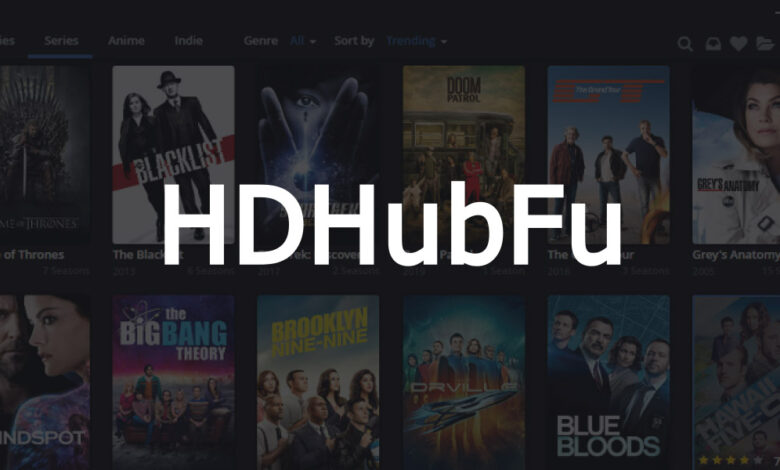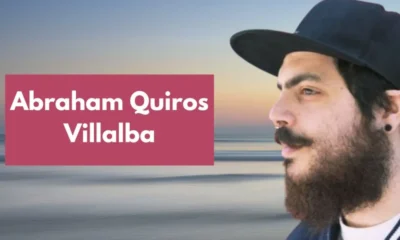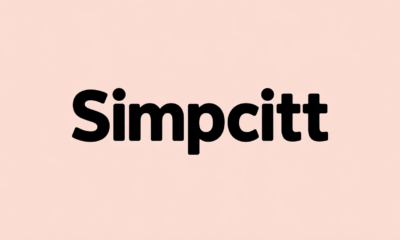Blog
Corpenpelloz: The Rise of a Digital Enigma in Modern Innovation
Published
7 months agoon
By
James
In a world increasingly defined by fast-paced technological shifts and a hunger for streamlined efficiency, a curious new term has begun surfacing in digital spaces, innovation forums, and industry whispers alike: Corpenpelloz. Mysterious in name but rich in implications, Corpenpelloz represents more than just a trend—it signals a cultural, corporate, and technological inflection point.
What is Corpenpelloz?
At first glance, Corpenpelloz appears to be a coined term—a portmanteau of “corporate” and something more abstract, possibly “impulse” or “peloz,” a word derived from older dialects meaning motion or pulse. In this linguistic ambiguity lies its charm. Corpenpelloz is best understood as a conceptual framework that merges adaptive corporate intelligence, agile digital ecosystems, and AI-driven decision systems into a single streamlined protocol.
In simpler terms, it refers to a new breed of digital platforms and methodologies that corporations are increasingly adopting to stay nimble, predictive, and deeply integrated with both internal data flows and external market dynamics.
The Core Elements of Corpenpelloz
To understand the rising adoption of Corpenpelloz systems, it is essential to break down its foundational pillars:
1. Neural Adaptive Intelligence
Corpenpelloz platforms are distinguished by their ability to evolve based on internal and external stimuli. At the heart of this is neural adaptive intelligence—AI that continuously learns and reshapes itself in response to behavioral data, economic shifts, and employee feedback loops.
This isn’t just reactive AI; it’s proactive intelligence. Corpenpelloz engines don’t wait for quarterly reviews—they actively analyze the landscape in real time, suggesting optimal strategies before human executives even pose the question.
2. Decentralized Decision Nodes
Unlike traditional hierarchical corporate systems, Corpenpelloz enables decentralized decision-making. It empowers team leads, departments, and even bots with calibrated autonomy. This shifts the corporate structure from a vertical command tower into a horizontal intelligence grid.
These decentralized nodes are connected through a secure mesh network, allowing them to communicate, share insights, and propose micro-decisions without bottlenecks.
3. Quant-Behavioral Integration
Corpenpelloz platforms blend quantitative metrics with behavioral insights, making decisions not just based on raw data but also on emotions, morale, and mental patterns within the workforce and customer base.
By deploying behavioral AI modules and sentiment tracking tools, Corpenpelloz frameworks can predict employee turnover, customer dissatisfaction, or innovation stagnation well in advance.
4. Time-Torsion Forecasting
This futuristic-sounding feature is a cornerstone of advanced Corpenpelloz environments. Time-torsion forecasting refers to predictive algorithms that simulate potential timelines based on current data streams.
Think of it like a digital oracle, showing executives not just one possible future, but a kaleidoscope of parallel outcomes—each mapped with its own probability score and strategic implication.
Corpenpelloz vs. Traditional ERP/CRM Systems
At its core, Corpenpelloz is often mistaken for an overhyped ERP or CRM revamp. However, the distinction is crucial:
| Feature | Traditional ERP/CRM | Corpenpelloz |
|---|---|---|
| Adaptability | Periodic updates | Real-time evolution |
| Decision Hierarchy | Top-down | Mesh/Distributed |
| Forecasting | Historical trends | Predictive multi-path |
| User Experience | Rigid, role-based | Contextual and fluid |
| AI Utilization | Basic automation | Proactive intelligence |
Corpenpelloz isn’t just software—it’s a live digital organism embedded within corporate DNA.
Origins and Early Adopters
The term “Corpenpelloz” first emerged in late 2022 during a closed-door innovation summit in Rotterdam hosted by the futuristic think tank NüVant Labs. Initially, it was proposed as a theoretical model for what post-corporate digital interfaces might look like. By mid-2023, several tech-forward companies—especially those in fintech, logistics, and healthcare—began quietly implementing beta versions of Corpenpelloz systems.
Notably:
- Verniq Capital launched a Corpenpelloz-powered decision core that reduced its forecasting error margin by 43% in under six months.
- Mendron Health Systems used it to automate ethical triage decisions during a hospital overflow crisis, guided by real-time behavioral and demographic analytics.
- Arvontik Freight, a global logistics firm, leveraged Corpenpelloz to optimize shipping routes dynamically based on political sentiment and climate data.
The Culture of Corpenpelloz
One of the most fascinating dimensions of Corpenpelloz is how it’s shaping organizational culture. Rather than enforcing rigid hierarchies or quarterly KPIs, Corpenpelloz emphasizes real-time alignment with purpose.
Many users describe a Corpenpelloz-infused workplace as “flow-oriented.” Teams don’t just follow tasks—they respond to pulses: micro-instructions, mood-tracking nudges, and collaboration suggestions generated by the platform itself.
Moreover, “emotive transparency” is promoted. Employees can opt into dashboards that track not only their performance but also emotional wellbeing, communication resonance, and adaptive learning styles.
This creates what many are calling The Responsive Workplace—a living, breathing entity where communication, strategy, and morale are constantly in flux, guided by Corpenpelloz algorithms.
Criticism and Ethical Concerns
Despite its futuristic appeal, Corpenpelloz has not been without controversy.
1. Privacy Intrusions
With behavioral metrics and sentiment tracking at its core, critics argue that Corpenpelloz systems blur the line between productive analytics and invasive surveillance. Critics question whether such tools infringe on personal freedom, particularly in cultures that value privacy and individualism.
2. Algorithmic Authoritarianism
Some corporate ethicists warn of “AI determinism,” where executives defer too heavily to Corpenpelloz suggestions, leading to the erosion of human judgment in morally complex scenarios.
3. Digital Overload
With constant updates, nudges, and insights, employees may suffer from information fatigue, leading to decreased focus or anxiety from hyper-productivity expectations.
4. Bias Amplification
As with any AI model, data bias can creep into Corpenpelloz environments, potentially leading to discriminatory outcomes if not carefully monitored and regulated.
The Corpenpelloz Ecosystem
Several companies are racing to build Corpenpelloz-compatible infrastructures. Among them:
- Inflyct.AI offers emotion-mapping APIs designed for Corpenpelloz integration.
- Meshmentum is developing decentralized collaboration boards with real-time intent analysis.
- Pulvirox Systems focuses on Corpenpelloz compliance layers for industries with heavy regulation.
A growing open-source movement is also pushing for “C-Open”—a transparent version of Corpenpelloz that can be audited, edited, and forked without corporate lock-in.
What Comes Next?
Corpenpelloz may still be in its infancy, but its trajectory is unmistakable. Analysts predict that by 2028, at least 35% of Fortune 500 companies will have adopted Corpenpelloz elements in their operational fabric.
We’re likely to see:
- Government Corpenpelloz deployments for city planning and citizen engagement.
- Education-sector versions to tailor learning environments in real-time.
- Cross-border trade management platforms using Corpenpelloz intelligence to adapt to economic shifts, wars, and climate disasters.
In a decade’s time, we might even forget the term “Corpenpelloz”—not because it failed, but because it became so deeply embedded into organizational architecture that it felt natural.
Conclusion
Corpenpelloz is not a product or a single piece of technology—it is a paradigm shift. It represents the evolution of corporate systems from static, monolithic structures to fluid, intelligent ecosystems that thrive on real-time adaptation, empathy, and decentralized logic.
As with any powerful innovation, Corpenpelloz demands thoughtful governance, ethical boundaries, and cultural sensitivity. But if harnessed correctly, it has the potential to redefine how we work, collaborate, and lead in a digital-first world.
From boardrooms to breakrooms, Corpenpelloz is writing the next chapter in the book of modern enterprise. And whether we embrace it or resist it, one thing is certain: the future is pulsing—and Corpenpelloz is at its heartbeat.
You may like
Blog
Qiuzziz: A Complete Guide to Smarter Interactive Learning
Published
3 months agoon
September 22, 2025By
Ninja
Education has evolved from chalkboards and traditional textbooks into digital platforms that offer students interactive ways to learn. One tool that has gained immense popularity in classrooms and beyond is Qiuzziz. This platform is designed to make learning more engaging by using quizzes, polls, and gamified assessments. Teachers, corporate trainers, and even students themselves use Qiuzziz to create and participate in learning sessions that are both fun and effective. Instead of memorizing concepts in isolation, learners are now encouraged to participate in an environment that rewards active involvement and real-time feedback.
What is Qiuzziz?
Qiuzziz is an online learning and quiz platform that enables educators to create, assign, and analyze quizzes with ease. Unlike traditional multiple-choice assessments, Qiuzziz gamifies the experience by including leaderboards, power-ups, themes, and immediate scoring. This makes the platform appealing to students who often see studying as a dull activity. Teachers can either create their own questions or use a library of ready-made quizzes shared by other educators worldwide. Learners can participate through any device, making it versatile and widely accessible.
The Growing Popularity of Qiuzziz
The popularity of Qiuzziz can be attributed to its blend of entertainment and education. In a time when students are accustomed to interactive video games and social media, traditional lectures often fail to capture attention. Qiuzziz taps into this reality by combining education with competitive gaming features. Schools, universities, and even businesses worldwide have adopted the platform to improve engagement levels. The global shift toward remote and hybrid learning has also boosted its adoption because it provides an easy and interactive way to assess learners online.
Key Features of Qiuzziz
One of the reasons Qiuzziz has become a favorite among teachers and learners is its set of innovative features. The platform offers real-time quizzes, homework modes, and assignments that can be completed at the learner’s own pace. It provides instant feedback, which is crucial for identifying strengths and weaknesses. The leaderboard system adds a competitive element that motivates learners to improve their scores. Qiuzziz also integrates with other digital platforms like Google Classroom, making it easy to adopt into existing learning ecosystems. Its analytics tools allow teachers to track performance and adjust lessons accordingly.
How Qiuzziz Benefits Teachers
For teachers, Qiuzziz eliminates the time-consuming process of creating, administering, and grading quizzes. The platform automatically evaluates responses and generates detailed reports, giving teachers more time to focus on instruction rather than paperwork. Teachers can also access a global database of quizzes created by other educators, which saves preparation time and provides inspiration for creative assessments. Another benefit is the flexibility to use Qiuzziz for both formative and summative assessments, making it adaptable to different teaching styles and subject areas.
Advantages for Students Using Qiuzziz
From the student perspective, Qiuzziz transforms learning from a passive to an active experience. Instead of reading endless notes, students participate in quizzes that test their knowledge while entertaining them. The instant feedback mechanism helps learners understand where they went wrong and how to improve. The gamification element, including scores and leaderboards, makes the learning process competitive and rewarding. Students also appreciate the ability to access quizzes anytime and anywhere, allowing them to practice at their own pace and revisit concepts as needed.
Qiuzziz for Corporate Training
Beyond schools and universities, Qiuzziz has proven valuable for corporate training and employee development. Companies use it to create interactive training modules that help employees retain information more effectively. For example, businesses can design quizzes to reinforce workplace policies, compliance training, or new product knowledge. The analytics features allow managers to monitor employee progress and identify areas where further training is required. The engaging nature of Qiuzziz makes training less monotonous and more effective, resulting in higher participation rates and better retention of knowledge.
Customization and Creativity in Qiuzziz
A standout feature of Qiuzziz is the ability to customize quizzes creatively. Teachers and trainers can design questions in various formats, including multiple-choice, polls, and open-ended responses. The platform allows users to add images, videos, and memes to make quizzes visually engaging. This customization not only captures learners’ attention but also helps educators align quizzes with their unique teaching objectives. Creative customization means that quizzes are not one-size-fits-all but instead tailored to suit specific age groups, subjects, and skill levels.
The Role of Gamification in Qiuzziz
Gamification is at the heart of Qiuzziz’s success. By incorporating elements like points, streaks, and leaderboards, the platform mimics the appeal of video games. This strategy taps into the natural human desire for competition and achievement. Students are motivated to improve their scores and climb higher on the leaderboard, while still focusing on learning content. Gamification also encourages collaboration when quizzes are played in teams, creating a sense of community in the classroom or workplace. By transforming learning into a game, Qiuzziz removes the fear of failure and replaces it with excitement and motivation.
Accessibility and Ease of Use
Another major advantage of Qiuzziz is its accessibility. The platform is designed to be user-friendly for both educators and learners. It works seamlessly on computers, tablets, and smartphones without the need for complex installations. Teachers can share quiz links through email or learning management systems, and students can join instantly without technical difficulties. This simplicity has made Qiuzziz popular among users of all ages, including younger students who may not yet be comfortable with complex digital platforms.
Real-Time Feedback and Analytics
Feedback is essential in the learning process, and Qiuzziz provides it instantly. As soon as a student answers a question, they know whether they were correct or not. This real-time feedback helps students learn from mistakes immediately, preventing misunderstandings from becoming ingrained. For teachers and trainers, the analytics tools present detailed reports on class performance, highlighting trends and areas that need attention. This data-driven approach allows educators to refine their teaching strategies and provide targeted support to students who are struggling.
Collaborative Learning with Qiuzziz
Qiuzziz also fosters collaborative learning. In classroom settings, quizzes can be played in teams, encouraging students to work together toward a common goal. This enhances communication, teamwork, and problem-solving skills. Collaboration makes learning more enjoyable, especially for students who may find individual assessments intimidating. Teachers can also use team-based modes to encourage peer learning, where stronger students support their classmates in understanding difficult concepts.
Self-Paced Learning Opportunities
One of the challenges in education is addressing the varying learning speeds of students. Qiuzziz solves this by offering self-paced modes where students can complete quizzes on their own time. This flexibility ensures that faster learners can move ahead while slower learners have the time they need to fully grasp concepts. Self-paced learning also builds a sense of responsibility and independence in students, as they are encouraged to take charge of their own educational journey.
The Global Community of Qiuzziz Users
Qiuzziz has grown into a global platform with millions of quizzes created and shared across different subjects and languages. This community-driven model allows educators from around the world to share resources and ideas. Students benefit from access to a wide range of quizzes covering diverse topics, from mathematics to history to language learning. The global reach of Qiuzziz not only expands its resource base but also connects learners from different cultural backgrounds, promoting a more inclusive approach to education.
Comparing Qiuzziz to Other Platforms
While there are several quiz-based learning platforms available, Qiuzziz stands out due to its combination of gamification, customization, and analytics. Competitors often focus on one of these elements, but Qiuzziz brings them all together in one package. Its balance of entertainment and serious learning sets it apart, as it does not compromise educational quality for the sake of fun. The ease of integration with other digital tools also gives it an edge over platforms that operate in isolation.
Challenges and Limitations of Qiuzziz
Despite its many advantages, Qiuzziz is not without limitations. One challenge is the reliance on internet connectivity, which can be a barrier in areas with poor access. While gamification increases motivation, it can also create pressure for students who are less competitive or who struggle academically. Teachers must ensure that the platform is used to encourage rather than discourage learners. Another limitation is that while quizzes are effective for testing knowledge, they may not fully assess deeper critical thinking or problem-solving skills.
Future of Qiuzziz in Education
As education continues to embrace digital transformation, the future of Qiuzziz looks promising. Developers are likely to introduce more advanced features such as adaptive quizzes powered by artificial intelligence, which can adjust difficulty levels based on individual student performance. The integration of virtual reality or augmented reality may also enhance the immersive experience of learning through quizzes. With its proven ability to engage learners, Qiuzziz is expected to play a growing role in shaping the future of education worldwide.
Tips for Maximizing Qiuzziz in Learning
To make the most of Qiuzziz, educators should focus on creating quizzes that balance fun with educational value. Including images, videos, and humor can enhance engagement, but the content should always align with learning objectives. Teachers should also use the analytics data to identify struggling students and provide personalized support. Encouraging teamwork and self-paced learning modes ensures that different learning styles are accommodated. By strategically using the platform, educators can maximize its potential as both a teaching and learning tool.
Conclusion
Qiuzziz has revolutionized the way educators and learners interact with educational content. By combining gamification, real-time feedback, customization, and accessibility, it has created a platform that makes learning both enjoyable and effective. Whether in schools, universities, or corporate environments, Qiuzziz has demonstrated its ability to transform passive learning into an engaging and interactive experience. Despite a few limitations, its advantages far outweigh its drawbacks, making it one of the most influential educational tools of the digital age. As technology continues to shape the future of education, Qiuzziz is poised to remain a vital resource for learners and educators alike.
Blog
HDHubFU: A Comprehensive Guide to the Popular Torrent Site
Published
7 months agoon
May 28, 2025By
Rocklord
Introduction
In the digital age, accessing movies, TV shows, and other entertainment content has become easier than ever, thanks to torrent websites. One such platform that has gained significant popularity is HDHubFU. Known for its vast collection of high-definition (HD) content, HDHubFU has become a go-to destination for users looking to download the latest movies and TV series.
This article explores what HDHubFU is, its features, legal concerns, alternatives, and safety precautions for users who might consider accessing such platforms.
What is HDHubFU?
HDHubFU is a torrent indexing website that provides links to high-quality movies, TV shows, web series, and other digital content. The site primarily focuses on HD and 4K content, making it a favorite among users who prefer high-resolution downloads.
Key Features of HDHubFU
- Extensive Library – The site hosts a vast collection of movies and TV shows across multiple genres, languages, and regions.
- High-Quality Content – As the name suggests, HDHubFU specializes in HD (720p, 1080p) and 4K resolution files.
- User-Friendly Interface – The website is designed for easy navigation, allowing users to search and download content quickly.
- Regular Updates – New releases are frequently added, ensuring users have access to the latest entertainment.
- Multiple Download Options – Users can choose from various file sizes and formats depending on their preferences.
Is HDHubFU Legal?
The legality of HDHubFU is a gray area. While the site itself does not host any copyrighted content, it provides magnet links and torrent files that allow users to download pirated material.
Legal Risks Involved
- Copyright Infringement – Downloading or distributing copyrighted content without permission is illegal in many countries.
- ISP Monitoring – Internet Service Providers (ISPs) may track torrenting activities and issue warnings or penalties.
- Government Blocking – Many governments have banned torrent sites, including HDHubFU, due to piracy concerns.
Users should be aware of the potential legal consequences before accessing such platforms.
How to Access HDHubFU Safely? (If You Choose To)
Despite the risks, some users still access torrent sites. If you decide to use HDHubFU, here are some safety measures to consider:
1. Use a VPN (Virtual Private Network)
A VPN hides your IP address and encrypts your internet traffic, making it difficult for ISPs and authorities to track your activities. Some reliable VPNs include:
- ExpressVPN
- NordVPN
- Surfshark
2. Enable Antivirus Protection
Torrent files can sometimes contain malware or viruses. A strong antivirus program can help detect and block malicious files.
3. Avoid Downloading Suspicious Files
Stick to verified uploaders and check comments (if available) to ensure the file is safe.
4. Use a Secure Torrent Client
Some torrent clients, like qBittorrent or Deluge, offer additional security features compared to others.
HDHubFU Proxy and Mirror Sites
Due to frequent domain seizures, HDHubFU often changes its URL or operates through proxy and mirror sites. If the main site is blocked, users can search for HDHubFU mirrors to access the service.
How to Find Working HDHubFU Proxies?
- Search for “HDHubFU proxy” or “HDHubFU mirror” on search engines.
- Check forums like Reddit or TorrentFreak for updated links.
- Use Tor Browser for anonymous access if the site is blocked in your region.
Top Alternatives to HDHubFU
If HDHubFU is down or inaccessible, users can explore other torrent sites with similar content. Some popular alternatives include:
1. The Pirate Bay (TPB)
- One of the oldest and most reliable torrent sites.
- Offers movies, TV shows, games, and software.
2. 1337x
- Well-organized with verified torrents.
- Minimal ads compared to other torrent sites.
3. RARBG
- Known for high-quality movie releases.
- Provides detailed file information (bitrate, resolution, etc.).
4. YTS (YIFY Torrents)
- Specializes in small-sized HD movies.
- Popular for its high-quality, compressed files.
5. Torrentz2
- A meta-search engine that aggregates torrents from multiple sources.
Ethical and Legal Streaming Alternatives
Instead of using torrent sites, users can opt for legal streaming platforms that offer a vast library of movies and TV shows. Some popular options include:
1. Netflix
- Offers a mix of licensed and original content.
- Available in multiple regions with subscription plans.
2. Amazon Prime Video
- Includes movies, TV shows, and exclusive Amazon Originals.
3. Disney+
- Best for Disney, Marvel, Star Wars, and Pixar content.
4. Hulu
- Focuses on TV shows and next-day streaming for many series.
5. HBO Max
- Features HBO originals, Warner Bros. movies, and exclusive series.
These platforms ensure legal and safe streaming while supporting content creators.
Conclusion
HDHubFU is a popular torrent site for HD movies and TV shows, but it comes with legal and security risks. While some users may prefer torrenting for free content, it’s important to understand the potential consequences.
If you choose to use HDHubFU, always prioritize safety by using a VPN, antivirus, and trusted torrent clients. Alternatively, consider legal streaming services to enjoy entertainment without violating copyright laws.
Ultimately, the best way to support the entertainment industry is by using official platforms that compensate creators for their work.
Final Thoughts
Torrenting may seem convenient, but the risks involved—legal trouble, malware, and ethical concerns—make it a questionable choice. Exploring legal alternatives ensures a safer and more sustainable way to enjoy digital content.
Would you risk using HDHubFU, or do you prefer legal streaming? Let us know in the comments!

In the vast and colorful world of anime, certain names come and go, while others carve out a space so unique that they reshape how we engage with Japanese animation globally. One such name that has been gaining serious traction over the past few years is Animeidhen — a name that has sparked curiosity, debate, and passion among anime fans around the world.
But what exactly is Animeidhen? Where did it come from, and why is it making waves now? This article dives deep into the phenomenon of Animeidhen, its origins, what sets it apart, and why it might just be one of the most important emerging forces in anime fandom today.
What is Animeidhen?
At its core, Animeidhen (sometimes stylized as AnimeIdhen or Animeïdhen) is an ambitious digital platform dedicated to anime streaming, community engagement, and fan-driven content. But calling it “just another streaming service” would be selling it short.
Animeidhen isn’t merely about providing access to shows — it’s about creating an experience.
The platform was reportedly launched in 2023 by a collective of anime enthusiasts and developers from Japan and Europe who wanted to break away from the restrictive models of mainstream streaming giants. Their goal? To create a fan-centered ecosystem that not only respects the creators but also gives fans a more direct voice in shaping content, recommendations, and discussions.
Origins and Vision
Animeidhen emerged during a time when the global anime community was feeling both empowered and frustrated. On one hand, anime was more accessible than ever thanks to platforms like Crunchyroll, Funimation, Netflix, and Amazon Prime Video. On the other hand, fans often complained about:
- Licensing restrictions that meant some regions couldn’t access certain shows.
- Delayed simulcasts that frustrated international fans.
- Algorithm-driven recommendations that often missed niche or underrated gems.
- Minimal fan interaction outside of social media or forums.
Animeidhen positioned itself as a solution to these frustrations.
According to its founding manifesto (published on its site), Animeidhen’s mission is to “celebrate the full spectrum of anime culture, from mainstream blockbusters to obscure indie works, while ensuring that fans remain central to discovery, discussion, and creativity.”
Key Features That Set Animeidhen Apart
So, what makes Animeidhen special? Here are some of its standout features:
1️⃣ Fan-Governed Curation
Unlike Netflix or Disney+, where algorithms or corporate editors decide what’s featured on the front page, Animeidhen allows fan curation. Through community votes, seasonal polls, and trending lists, users help shape what’s highlighted — from popular series to forgotten classics.
For example, in 2024, Animeidhen’s “Community Spotlight” series gave an unexpected boost to older, under-watched shows like Kaiba (2008) and Ergo Proxy (2006), generating new discussions and fan art across platforms like Twitter and Reddit.
2️⃣ Direct Creator Support
Animeidhen has partnered with several indie studios and creators, allowing fans to directly support the artists behind the works. This includes optional micro-payments, crowdfunding campaigns, and even fan commissions for things like exclusive wallpapers, bonus content, or behind-the-scenes material.
This bridges the gap between creators and audiences, especially for indie creators who often struggle to get exposure in the shadow of major studios.
3️⃣ Localized Global Access
One of Animeidhen’s boldest promises is its commitment to minimize regional restrictions. By negotiating innovative licensing deals, Animeidhen aims to provide near-simultaneous access across North America, Europe, Southeast Asia, and Latin America — a major win for fans tired of geo-blocking.
While this hasn’t been perfect (due to ongoing negotiations with some rights holders), the platform has made significant strides in offering a unified global experience.
4️⃣ Integrated Fan Tools
Animeidhen isn’t just about watching anime; it’s about engaging with it. The platform offers a suite of fan tools, including:
- Watch parties with synchronized playback.
- Integrated fan art and fan fiction hubs.
- Personalized recommendation trees (driven by community input, not just algorithms).
- Custom profile badges, achievements, and community rankings.
These features have transformed Animeidhen from a passive streaming service into an active fan playground.
Community-Driven Impact
Perhaps the most compelling aspect of Animeidhen is its community.
In a world where many platforms focus solely on content delivery, Animeidhen actively cultivates interaction. Regular live streams with voice actors and creators, community Q&A sessions, fan art contests, and seasonal festivals (like the Animeidhen Summer Matsuri) have made the platform feel alive.
For many users, Animeidhen is where they discover new favorites, meet like-minded fans, and participate in shaping the anime conversation.
One user, posting on r/animeidhen, put it this way:
Challenges and Controversies
No rising star is without its shadows.
Animeidhen has faced its fair share of challenges, including:
- Licensing hurdles: Major studios like Toei Animation and Aniplex have been slow to provide full access, leaving gaps in Animeidhen’s catalog.
- Server strain: During peak events (like the premiere of highly anticipated simulcasts), servers have occasionally buckled under the demand.
- Content moderation: With a highly active fan base comes the inevitable need for strong moderation to avoid toxicity or piracy, which Animeidhen has been actively working to improve.
Critics have also raised concerns about the sustainability of its creator-driven funding model. While microtransactions and fan support are great in theory, some worry that smaller studios might still struggle without more robust institutional backing.
The Cultural Significance
Animeidhen’s rise isn’t just about another streaming platform — it reflects a larger cultural shift.
We are witnessing a generation of fans who want more agency: they want to support the artists they love, discover beyond the mainstream, and engage directly with creators and communities. Animeidhen taps directly into this desire.
It’s also helping to diversify the anime conversation. While platforms like Crunchyroll cater heavily to North American tastes, Animeidhen’s global approach fosters cross-cultural discussions, bringing in perspectives from Europe, Latin America, Southeast Asia, and beyond.
The Future of Animeidhen
Looking ahead, Animeidhen has announced several exciting initiatives:
- Original Productions: The platform is working on co-producing original anime shorts with indie studios, giving experimental creators a new stage.
- Expanded Language Support: Plans are underway to add more subtitling and dubbing options, including in underrepresented languages like Arabic, Hindi, and Swahili.
- Interactive Content: Inspired by the success of interactive shows on Netflix, Animeidhen is exploring “choose-your-own-adventure” anime projects.
- Animeidhen Academy: A new educational initiative aims to offer tutorials, workshops, and courses on anime production, from storyboarding to voice acting.
If Animeidhen can successfully execute these plans, it could solidify its reputation as not just a streaming service, but a cultural powerhouse.
Final Thoughts
Animeidhen represents a fascinating evolution in anime fandom — a reminder that in a world dominated by corporate giants, there’s still room for community-driven innovation.
By putting fans and creators at the center, Animeidhen offers a vision of what anime culture can be: global, inclusive, interactive, and alive.
Of course, the road ahead isn’t without obstacles. Licensing complexities, funding challenges, and the need for continuous innovation will test Animeidhen’s resilience. But if the platform’s passionate community and forward-thinking leadership are any indication, Animeidhen is poised to leave a lasting mark on the anime world.
Trending
-

 Blog7 months ago
Blog7 months agoAbraham Quiros Villalba: Complete Information
-

 Entertainment7 months ago
Entertainment7 months agoهنتاوي.com: Your Gateway to Arabic-Subtitled Anime
-

 Technology3 months ago
Technology3 months agoLinki: Unveiling the Digital Connector in the Modern Age
-

 News7 months ago
News7 months agoDGMNews.com: A Comprehensive Overview of the Emerging Digital News Platform
-

 Blog7 months ago
Blog7 months agoSimpcitt: A New-Age Urban Marvel or a Digital Mirage?
-

 Blog7 months ago
Blog7 months agoThe Historical and Cultural Significance of Tonghou: A Journey Through Time
-

 Blog7 months ago
Blog7 months agoUnveiling The Life And Journey Of Keilani Bautista
-

 Technology7 months ago
Technology7 months agoXlecz: Exploring the Potential of a Revolutionary New Concept
